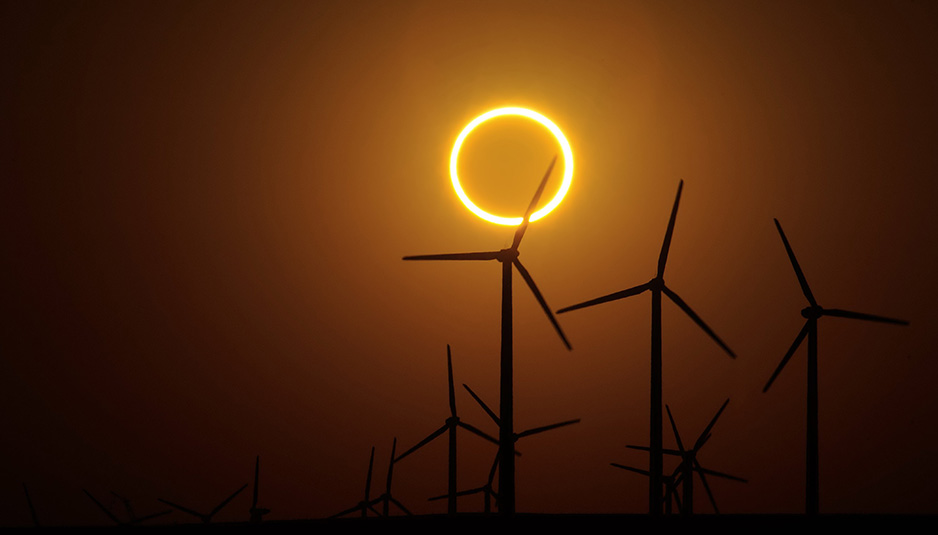Solar Eclipse and Renewable Energy Sources: what has really happened

daidegasforum.com
What has really happened last Friday? Some of you surely watched one of the most fascinating astronomic phenomena of the last years: a solar eclipse. On Friday 20th of March 2015, the moon has placed between the earth and the sun starting from 9.21 am till 11.43 am (Italian time).
The difference between a poet and an engineer – sadly – is that the first one looks enraptured the indisputable beauty of the event thinking about the infinity of the universe, meanwhile the second one asks himself how the photovoltaic production and the electric grid will react to a quick reduction of the solar radiation and to its instant return. According to several scientists, this phenomenon has been an unprecedented test for the European electric grid and for European energetic and electrical engineers. Let us go in order.
The last European visible solar eclipse dates back on 11th of August 1999, when the renewable European energetic production did not reach even 0.03% up to the total. Nowadays, that production is about 12% (average value), and it reaches picks of 38% / 40% on sunny days. The countries with the most important renewable energy production are Germany and Italy, with a respective nominal power of almost 40 GW and 20 GW.
Some of you could think: there is no sunlight during the night and during cloudy days, where is the problem then? The main problem is that last Friday the electric production would have decreased of 50% in Germany and 21% in Italy. Therefore, the risk would have been a general energetic blackout due to the following causes:
- The obscuring and lightning overhastyness. The sun obscuring, in fact, has passed from 1% to 98% in Reykjavík, 81% in Berlin, 78% a Paris, 58% a Moscow, 54% a Rome e 30% ad Athens in about 75 minutes (average phenomena duration of some of the European cities). The renewable energetic production has dropped quickly, and, after the eclipse the energetic output would have increased four times more quickly than normal if the electrical grid was been not equilibrated.
- Phenomenon extension, which has interested the entire European continent at the same moment.
- Phenomenon duration – almost four hours.
- The sunlight radiation reduction, both direct and indirect (the latter is typical of cloudy days but it allows a minimal production anyway). According to Doctor Anna Pribulova (SHMU) direct solar radiation has decreased from 920 W/m2 to 340 W/m2 in Slovakia, 63% less.
According to ENTSO-E (European Network of Transmission System Operators for Electricity) the accident risk couldn’t be excluded and, for this reason, ENTSO-E asked to each European country to draw up an efficacious energetic and logistic plan in order to avoid possible energetic blackouts. Production fluctuations – as well as demand fluctuations – do great harm to the electrical system, in which every moment the production has to be equal to the consumption for an optimal use of the grid.
Germany has an efficient energetic mix production, even if it depends on renewable sources up to 17% (especially photovoltaic and wind sources). According to Opower, Germany, in order to avoid a dangerous energetic drop, has not decided to switch off the renewable farms but, in any case, it has imported the electricity from the near countries, it has used the hydro-stocked energy and it has asked to the population to save as much energy as possible during the morning of Friday.
www.econewsweb.itIn Italy, Terna (National Electrical Grid), and more specifically its manager engineer Enrico Carlini, has decided to activate the RIGEDI – Delocalized Generation Reduction – emergency procedure, never used until last Friday. A lot of wind and solar electric plants (it is not possible, in fact, distinguish them from the electrical point of view) with a nominal power larger than 100 kWp have been unplugged from the electrical grid from 7.00 am to 2 pm of last Friday. Furthermore have been reduced the north-border imports and have been maximized the conventional (fossil fuels) primary, secondary and tertiary stocks. The forced switching off regarded about 7 GW – electrical renewable – and it has leaded to an increasing of the energy price in the morning of Friday from 50 euros per MWh to 90 euros per MWh. According to altroconsumo.com Italy has paid about 9 million of euros more in a single day.
Next appointment is on 12th of August 2026, when the obscuring of the sun will exceed the 97% in Sardinia, 95% in the north/west, 90% in the middle/north and about 70% in the remaining part of Italy. If – as I wish – the renewable sources will keep growing with the same pace, it would be better that Europe would start studying an efficient emergency energetic plan. Last Friday, in my opinion, it has emerged a new weak point of those technologies. Only starting from critical situation is possible to build a sustainable technology as well as efficient. We all should keep working.
